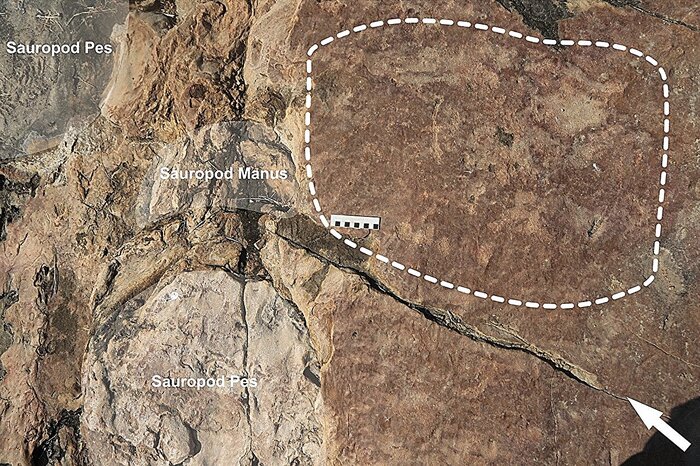More than a hundred prehistoric engravings have been discovered, arranged on a panel eight meters long, in the Cueva de la Vila, in the municipality of La Febró, in Tarragona.
The works of art found in the Mediterranean underground gallery are "exceptional, both for their singularity and for their excellent state of conservation," reports the team that has found the find, the Catalan Institute of Human Paleoecology and Social Evolution (IPHES).
The researchers point out that the drawings, due to their composition and intentionality, reflect the worldview of the agricultural and livestock societies that painted them.
More information
Prehistory: why did the first humans paint?
Among the rock art samples, there are representations of different figures of quadrupeds, zigzags, linear, angular and circle lines, and a series of zoomorphs (possibly bovids and equines), steliforms (alone or with stars) and reticulated ones.
The discovery of the engravings, from the Chalcolithic-Bronze period, constitutes "one of the few representations of underground schematic art in the entire Mediterranean Arc", as reported by the Catalan Generalitat.
The discovery marks "a historic milestone for prehistoric archaeology," according to IPHES.
A group of speleologists, who were carrying out explorations and topographical work in the area, found the Cueva de la Vila, a cavity that had been explored by Salvador Vilaseca in the 1940s and whose location had been lost.
The speleologists managed to open a small hole between the blocks and came across an oval room of more than 90 square meters.
The first person to enter was Juli Serrano, who, to her surprise, saw a "mural full of lines and figures."
Despite not knowing how to interpret it at the time, he felt "a very great emotion, which I will take with me for life."
Without knowing it, he had just discovered one of the most important assemblages of prehistoric rock art.
From that moment on, researchers Ramon Viñas and Josep Vallverdú from IPHES got to work on site.
Viñas details how the panel of engravings is configured from five horizontal lines, one on top of the other and, in each of them, there are different engraved figures that have their own meaning and symbolism.
The scientist points out that it is an "absolutely unusual" composition that indicates "a worldview on the part of the populations of the territory during the neolithization process."
A sample of the unpublished prehistoric engravings that are preserved in the underground complex of the Cueva de la Vila.
One of the singularities is that it is made "exclusively with the engraving technique," explains Viñas, using a stone or wooden tool or, directly, with the fingers.
The researcher considers this, as well as the fact that the set is "stylistically very homogeneous, with few overlaps", which indicates that it responds to a symbolic meaning.
It is not a composition that is the result of chance, he clarifies.
The center's research work defines it as an art associated with peasant and livestock communities during the transition period between the Chalcolithic and the Bronze Age, between 5,000 and 3,000 years before our era.
Some human groups that were generally found outdoors, their presence being very scarce in the underground cavities of Catalonia, in the north of the peninsula, while the rest of Spain have also been found in Andalusia, Segovia, Burgos or Soria.
To guarantee its conservation, in good weather conditions, the administration has closed access to the cat flap, which leads directly to the so-called
Sala dels Gravats
, so that this space will not be freely accessible.
The site has been declared a cultural asset of national interest by the Generalitat in the category of archaeological zone and work is underway to create a 3D model of the cavity.
You can follow
MATERIA
on
,
and
, or sign up here to receive
our weekly newsletter
.





/cloudfront-eu-central-1.images.arcpublishing.com/prisa/7WZF7XY4MBBE7PDEE6EP5RRIVI.jpg)

/cloudfront-eu-central-1.images.arcpublishing.com/prisa/5PQ3MMSAARAS3G2JIMN7VT64EE.jpg)

